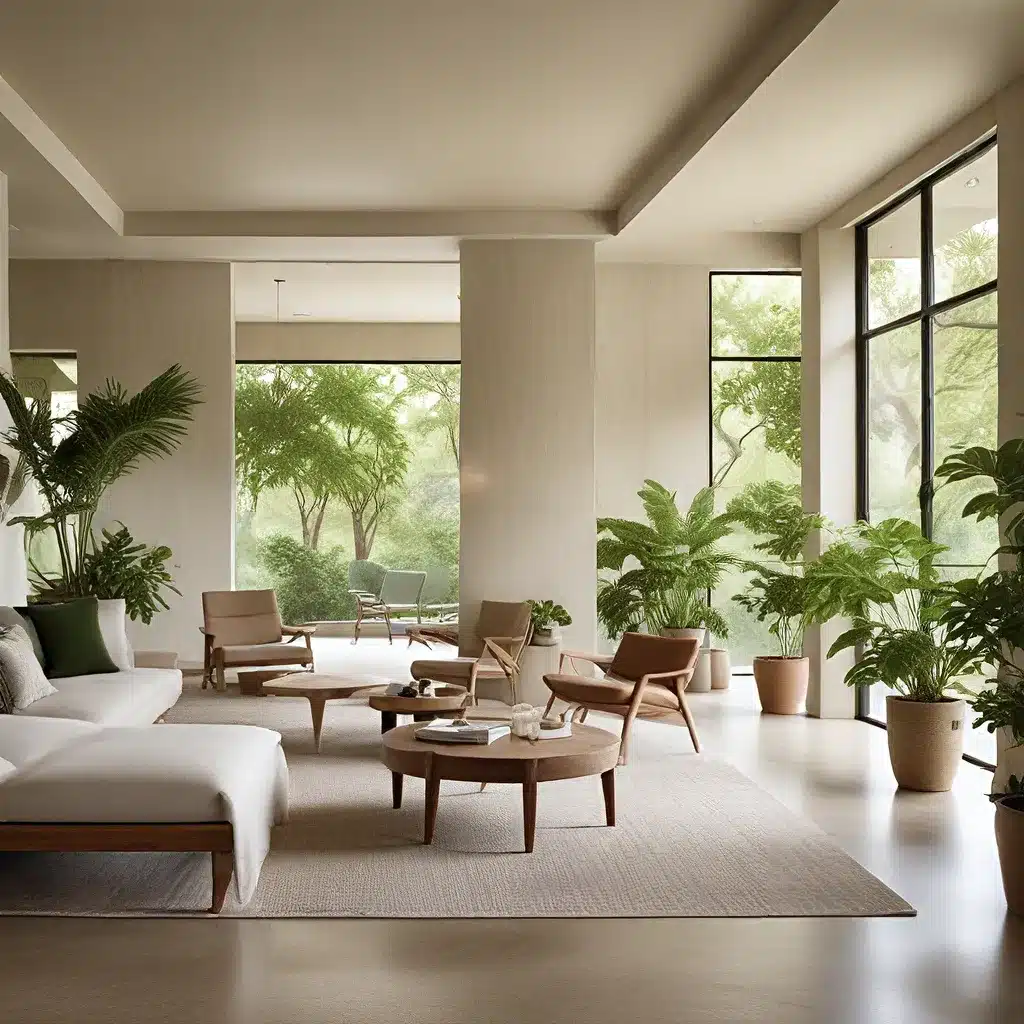
In today’s fast-paced world, our homes have become more than just a roof over our heads – they are sanctuaries where we can retreat, recharge, and reconnect with ourselves. As the boundaries between work and personal life continue to blur, the need for restorative and rejuvenating interior spaces has never been greater.
Savvy homeowners and design enthusiasts are increasingly prioritizing wellness-focused design as a means to cultivate a sense of serenity and wellbeing within their living spaces. By strategically incorporating elements that soothe the senses and nourish the soul, we can transform our homes into personal oases of tranquility – places where we can unwind, recharge, and rediscover our inner balance.
Harnessing the Power of Nature
One of the most effective ways to create a calming, rejuvenating interior is to draw inspiration from the natural world. After all, our connection to the outdoors is deeply rooted in our psyche, and studies have shown that exposure to natural elements can have a profoundly positive impact on our mental and physical well-being.
Luxury resort destinations have long understood the value of this connection, often incorporating elements like natural stone, wood, and greenery into their spa and wellness offerings. By mimicking these design cues in our own homes, we can harness the inherent soothing qualities of nature to create a sense of serenity and respite.
Consider incorporating large windows, skylights, or floor-to-ceiling glass walls to invite an abundance of natural light and views of the outdoors. Strategically placed potted plants, living walls, or even a small water feature can further enhance the connection to nature, while also improving air quality and promoting a sense of tranquility.
Curating Calming Color Palettes
Another crucial aspect of wellness-focused interior design is the strategic use of color. Certain hues have been shown to have a profound impact on our mood and emotions, making them essential tools in the quest for a more restorative and rejuvenating living space.
Soft, muted tones like blues, greens, and neutrals are often associated with feelings of calmness, relaxation, and introspection. These colors can help to create a sense of serenity and balance, making them ideal choices for bedrooms, bathrooms, and other spaces where we seek respite from the demands of daily life.
In contrast, vibrant, energetic colors like reds, oranges, and yellows can be better suited for more active areas of the home, such as the kitchen or home office. These hues can help to stimulate the senses and promote focus, making them valuable in spaces where we need to feel motivated and engaged.
When curating your color palette, consider the overall mood and function of each room, and strive to strike a harmonious balance between soothing tones and energizing accents. Remember, the goal is to create a holistic, rejuvenating environment that caters to your unique needs and preferences.
Designing for Comfort and Relaxation
Ultimately, wellness-focused interior design is not just about aesthetics – it’s about creating spaces that nourish both the body and the mind. To achieve this, it’s essential to prioritize comfort, relaxation, and sensory experiences throughout your home.
Invest in high-quality, plush furnishings that invite you to sink in and unwind, such as oversized sofas, cozy armchairs, and luxurious bedding. Incorporate soothing textures like soft throws, velvet accents, and fluffy rugs to create a tactile experience that engages the senses.
professional interior designers can also help you to incorporate thoughtful lighting design, strategically using dimmers, sconces, and natural illumination to create a calming, spa-like ambiance throughout your home.
Embracing the Art of Relaxation
To truly cultivate a sense of wellness and rejuvenation within your living space, it’s essential to incorporate elements that actively promote relaxation and mindfulness. Drawing inspiration from the Mandara Spa at Harrah’s Cherokee Casino Resort and the WORLD SPA in New York City, consider adding dedicated relaxation areas that cater to your unique needs and preferences.
This could include a meditation nook, a cozy reading corner, or a private outdoor retreat – spaces where you can unwind, reflect, and reconnect with yourself. Furnish these areas with comfortable seating, soothing lighting, and calming décor to create a truly restorative and rejuvenating experience.
Additionally, consider incorporating wellness-focused amenities into your home, such as a sauna, steam shower, or soaking tub. These luxurious features can help to reduce stress, improve circulation, and promote overall well-being, transforming your living space into a personal oasis of tranquility and self-care.
Elevating Everyday Experiences
Finally, remember that wellness-focused design is not just about the big-ticket items – it’s also about the small, thoughtful touches that can elevate our everyday experiences and foster a deeper sense of calm and contentment.
From strategically placed aromatherapy diffusers to meditation cushions and soothing sound machines, the little things can make a big difference in creating a rejuvenating, restorative environment. Incorporate natural, organic materials into your décor, such as handcrafted ceramics, woven baskets, or sustainably sourced wood, to imbue your space with a sense of warmth, authenticity, and grounding.
Remember, the ultimate goal of wellness-focused interior design is to cultivate a living environment that nourishes your mind, body, and spirit – a sanctuary where you can recharge, reset, and rediscover your inner harmony. By thoughtfully incorporating natural elements, calming colors, and luxurious comforts, you can transform your home into a personal oasis of tranquility and well-being – a place where you can truly thrive.

